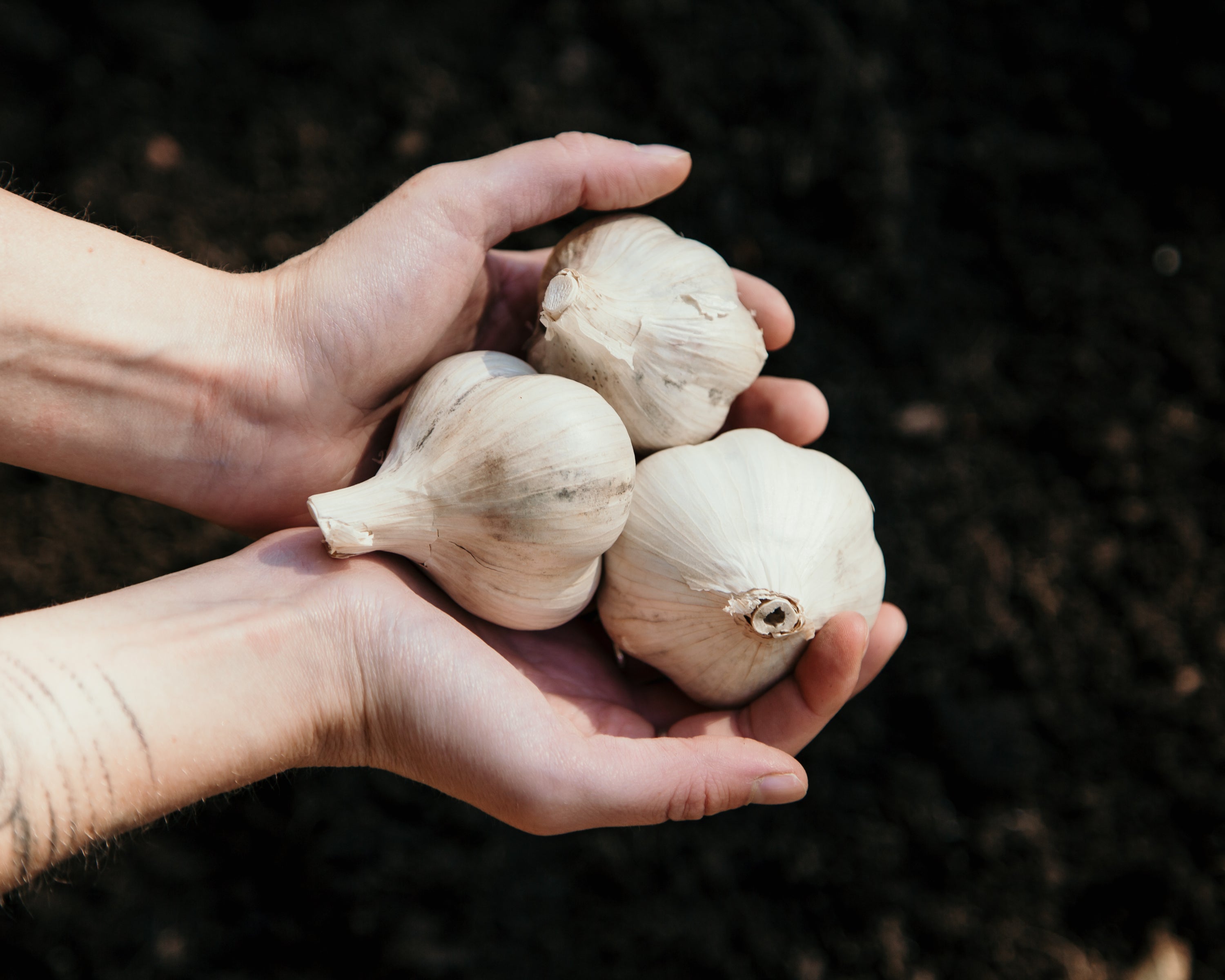
I think we can all agree that garlic is one of the most useful ingredients in the kitchen. Did you know that it’s also easy to grow? It doesn’t require a lot of attention once it’s been planted. You can plant it in either the spring or the fall. Planting your garlic in the fall allows it to take root before going dormant for the winter. This makes for an earlier harvest in the summer. Here is everything you’ll need to know about fall planting for garlic.
Choosing your garlic:
Did you know there are 2 types of garlic? Garlic comes in hardneck and softneck varieties. Hardneck garlic, as the name implies, has a hard neck. It tends to be hardier and does better in colder climates. It also develops scapes. These are long flower stalks that should be removed in early summer so that all of the plant’s energy goes towards developing the bulb. These scapes are edible and have a more mild garlic flavor. On the other hand, softneck garlic is best for growing in warmer climates. The neck remains flexible and this type of garlic does not develop scapes. Within each category of garlic, there are dozens of different varieties, each with its own unique flavor to choose from. The best choice for you all depends on your growing location and personal preference.
Where to get it:
No matter which type of garlic you choose, you will need to track down a local, certified organic seed garlic. You can use garlic from the grocery store in some cases, but it’s not ideal and may be more difficult. Often times garlic from the grocery store has been treated to prevent it from sprouting. Buying specific seed stock from a local source ensures a quality garlic that is adapted to grow in your region. In most cases, a quick internet search will result in different local farms with many varieties of seed garlic to choose from. This year, we decided to plant Georgian Crystal, a hard-neck variety with a robust flavor and a little bit of heat. It’s also very hardy which is important for our growing zone.

When to plant it:
You’ll want to plant your garlic about 3-4 weeks before the first hard frost is predicted for your region. This will allow you to plant early enough that the roots take, but not so early that top growth emerges which could be damaged by frost.
Where to plant it:
Plant garlic in a sunny, well drained area. You do not want to plant it in a spot where onions or other alliums were grown this year. For best results, work organic matter into the soil before planting to supply adequate nutrition to support growth.
How to plant it:
Once you have your garlic and you’re ready to plant it, separate the bulbs into individual cloves. Choose only the biggest cloves for planting and leave the papers on. Plant the cloves 3” down and 4-6” apart, with the pointy end upwards. Cover with soil and then straw or mulch on top to help keep them insulated.
How to harvest it:
Come springtime, you should notice some top growth coming up. If planting a hardneck variety, this is around the time you will see the scapes which can be snapped off to direct energy towards the bulb. By summer, each clove will have turned into an entire bulb. When you notice the bottom leaves starting to die back, it’s ready to harvest.
How to cure and store it:
To cure your garlic, bundle the plants to hang in an area that has good airflow. This will encourage drying and prevent rotting. After hanging for about a month, cut the tops down to about 1”. Cut the roots and brush any excess dirt off the papers. You will want to store your garlic in a cool location out of direct sunlight. Enjoy your tasty garlic and be sure to save the largest ones to plant again in the fall!



